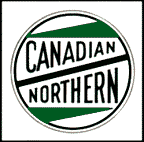| It is currently Tue Apr 23, 2024 3:58 am |
|
All times are UTC - 5 hours [ DST ] |
.
Moderators: Rick Rowlands, tomgears, Randy Hees
 
|
Page 3 of 3 |
[ 43 posts ] | Go to page Previous 1, 2, 3 |
|
| TrainDetainer |
|
||
|
Joined: Wed Nov 23, 2016 7:05 pm Posts: 272 |
|
||
| Overmod |
|
||
|
Joined: Thu May 24, 2012 1:37 pm Posts: 2234 |
|
||
| TrainDetainer |
|
||
|
Joined: Wed Nov 23, 2016 7:05 pm Posts: 272 |
|
||
| softwerkslex |
|
||
|
Joined: Thu Apr 14, 2005 9:34 pm Posts: 2762 Location: Copenhagen, Denmark |
|
||
| Overmod |
|
||
|
Joined: Thu May 24, 2012 1:37 pm Posts: 2234 |
|
||
| SD70dude |
|
|||
Joined: Tue Feb 20, 2018 7:08 pm Posts: 317 Location: Alberta, Canada |
|
|||
| TrainDetainer |
|
||
|
Joined: Wed Nov 23, 2016 7:05 pm Posts: 272 |
|
||
| Mark Jordan |
|
||
|
Joined: Fri Nov 07, 2008 11:21 am Posts: 473 |
|
||
| Tom F |
|
||
|
Joined: Mon Jul 02, 2018 8:04 pm Posts: 314 |
|
||
| Alexander D. Mitchell IV |
|
||
|
Joined: Sun Aug 22, 2004 1:51 pm Posts: 11498 Location: Somewhere east of Prescott, AZ along the old Santa Fe "Prescott & Eastern" |
|
||
| Bad Order |
|
||
|
Joined: Sun Jun 23, 2013 1:16 pm Posts: 209 |
|
||
| murph |
|
||
|
Joined: Sun Jul 17, 2016 7:58 pm Posts: 38 |
|
||
 
|
Page 3 of 3 |
[ 43 posts ] | Go to page Previous 1, 2, 3 |
|
All times are UTC - 5 hours [ DST ] |
Who is online |
Users browsing this forum: Google [Bot] and 146 guests |
| You cannot post new topics in this forum You cannot reply to topics in this forum You cannot edit your posts in this forum You cannot delete your posts in this forum You cannot post attachments in this forum |

